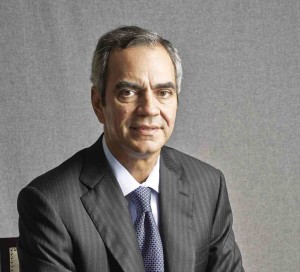The drop in job-creating foreign direct investments (FDI) last year was only temporary given a global slowdown in inflows caused by external economic factors, the Department of Finance said Wednesday.
“The FDI decline in the Philippines in 2018 mirrors the global FDI decline during the past two years. In 2017, it dropped 6.5 percent to $1.9 trillion. In the first half of 2018, it dropped by a heftier 44 percent to just $432 billion. This is due to slowdown in the world economy brought about by the US-China trade war, the Brexit and the slowdown in worldwide growth,” DOF Undersecretary and chief economist Gil S. Beltran said in an economic bulletin.
For the entire 2018, net FDI in the Philippines reached $9.8 billion, below the Bangko Sentral ng Pilipinas’ $10.4-billion goal.
Last year’s net inflows also declined 4.4 percent from the $10.3 billion in 2017, as Beltran noted that “the increase in debt instruments moderated the impact of the decline in equity and reinvestment of earnings.”
“Equity investments fell by 33.3 percent, reversing the surge of 31.1 percent it registered in 2017, the rise and fall of which came from the electricity sector. The rise in inflows to the electricity sector in 2017 was traced to the $1.3-billion investment made by a consortium of foreign investors in Energy Development Corp. (EDC), an operator of geothermal fields. On the other hand, in 2018, San Miguel Corp. (SMC) acquired Masinloc Group’s power assets for $1.9 billion,” Beltran explained.
According to Beltran, “regression analysis on determinants of FDI flows to the country confirms that FDI is sensitive to world gross domestic product (GDP), Philippine real GDP growth and real US treasury bond rate.”
“The drop in world GDP by 13.8 basis points shaved Philippine FDI flows by 0.1 percent of GDP. Likewise, the 35-bp increase in the US T-bond rate reduced Philippine FDIs by 0.44 percent of GDP. Without these two negative factors, Philippine FDI would have grown by about 0.24 percent of GDP (or $790 million),” he said.
For Beltran, “the drop in 2018 FDI is just a temporary phenomenon brought about by the uncertain world economic environment.”
Moving forward, Beltran said “FDI flows will recover when world conditions are better.”
For this year, the government targets $10.2 billion in FDI flows.
To take advantage of the better FDI prospects, Beltran sought a more drastic cut in red tape by implementing TradeNet.ph, the digital platform aimed at facilitating manufactured goods exports.
Also, Beltran recommended easing foreign ownership caps, as “the Philippines has one of the most restrictive investment regimes in Asia.”
In particular, “the Public Service Act should be amended to redefine public utilities and enhance competition to bring down costs,” he said. —Ben O. de Vera


